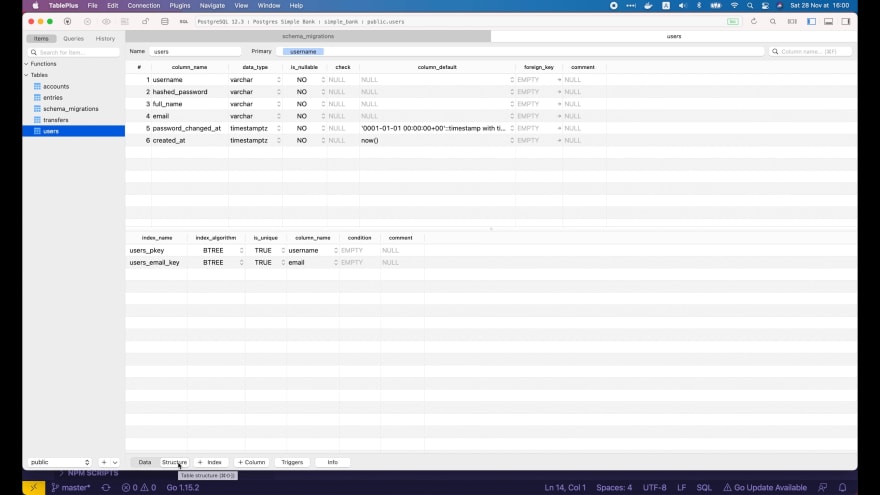

In the case of how PostgreSQL currently operates, copying over data from one table to another replica table only guarantees logical consistency: that is, every row present in the original table will be present in the new table, and the data will be a row by match at the row level only.Ĭopy into pre-existing table: INSERT INTO SELECT FROM WHERE Copying data between tables is just as easy as querying data however it will take a bit longer to run than a normal query. Copy index from one table to another Postgres click next and set "Script Check Constraints" to true, "Script Indexes " to true, "ScriptDependencies" to true and set whatever is needed. Expand databases and select the database->tasks->generate scripts to launch the GSW 3. Hello Ashuosh Use the Generate Scripts Wizard in SSMS for generating the script for constraints and indexes.

The USING clause specifies a query that names the source table and specifies the data that COPY copies to the destination table.įor a one-off copy, you can do a direct mode insert: insert /*+ APPEND */ into local_table select * from with of course, no indexes, constraints etc applied until after the population. When copying between Oracle databases, you should use SQL commands (CREATE TABLE AS and INSERT) or you should ensure that your columns have a precision specified. We can see the new column, and we can see that it has a NOT NULL constraint, and that its default value is 0.Copy index from one table to another Oracle Result: cid name type notnull dflt_value pk One way is to use the PRAGMA table_info() statement. There are several ways to check the structure of a table in SQLite.

We could do that using the following code: ALTER TABLE DogsĪDD COLUMN Score NOT NULL DEFAULT 0 Check the Alterations Here’s another example, this time I add some more specifications to the definition of the new column: CREATE TABLE Dogs(Īnd we now want to add a column called DOB. If the new column is a generated column, it cannot be STORED column.

If foreign key constraints are enabled and a column with a REFERENCES clause is added, the column must have a default value of NULL.If a NOT NULL constraint is specified, then the column must have a default value other than NULL.The new column cannot have a default value of CURRENT_TIME, CURRENT_DATE, CURRENT_TIMESTAMP, or an expression in parentheses.The new column cannot have a PRIMARY KEY or UNIQUE constraint.You can also provide other specifications to the definition, such as constraints, etc, but there are some restrictions. We could do that using the following code: ALTER TABLE Cats ADD COLUMN DOB Imagine we have the following table: CREATE TABLE Cats(Īnd we now want to add a column called DOB. The only things you can do with the ALTER TABLE statement in SQLite is rename a table, rename a column, and add a new column to an existing table. This is actually one of the few things you can do with the ALTER TABLE statement in SQLite. In SQLite, you can use the ALTER TABLE statement to add a column to an existing table.


 0 kommentar(er)
0 kommentar(er)
